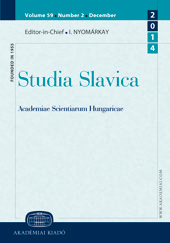Die Ikonostase der griechisch-orthodoxen Kirche in Balassagyarmat
The iconostasis of the Greek Orthodox Church in Balassagyarmat
Author(s): Gabriella ShahSubject(s): Cultural history, 18th Century, Eastern Orthodoxy, History of Religion
Published by: Akadémiai Kiadó
Keywords: icon; Greek Orthodox Church; Serbian community; Hungary; altar screen;
Summary/Abstract: In this essay, the author analyses the pictures of the altar screen located in the Greek Orthodox Church in Balassagyarmat, dogmatically and from the view of the history of art. Most of the Greeks dealing with trading activity in Nógrád County lived in Balassagyarmat in the 18th century. Accordingly, the one and only orthodox mother church of the County was founded here. Their first written records were mentioned in 1737. The governing committee gave permission to build the church in 1785. The parish in Balassagyarmat requested Miklós Jankovicz, one of the utmost masters of the late baroque wood sculpture in Hungary, to do the altar screen. The pictures on the altar screen were painted by Mihajlo Zsivkovics. For a long time, the fate of the church and that of the Greek or, by that time rather Serbian, community intertwined, and due to their decreasing number the church was demolished in 1908. In the right place, a smaller chapel and a block of flats were built. Church services were held once a week up to 1970 but then the church was sold. The Serbian Church in Balassagyarmat has been operated as an art gallery since the middle of the 1980s. The altar screen was taken apart and carried to Szentendre in the early seventies of the 20th century.
Journal: Studia Slavica Academiae Scientiarum Hungaricae
- Issue Year: 59/2014
- Issue No: 2
- Page Range: 435-442
- Page Count: 8
- Language: German
- Content File-PDF

